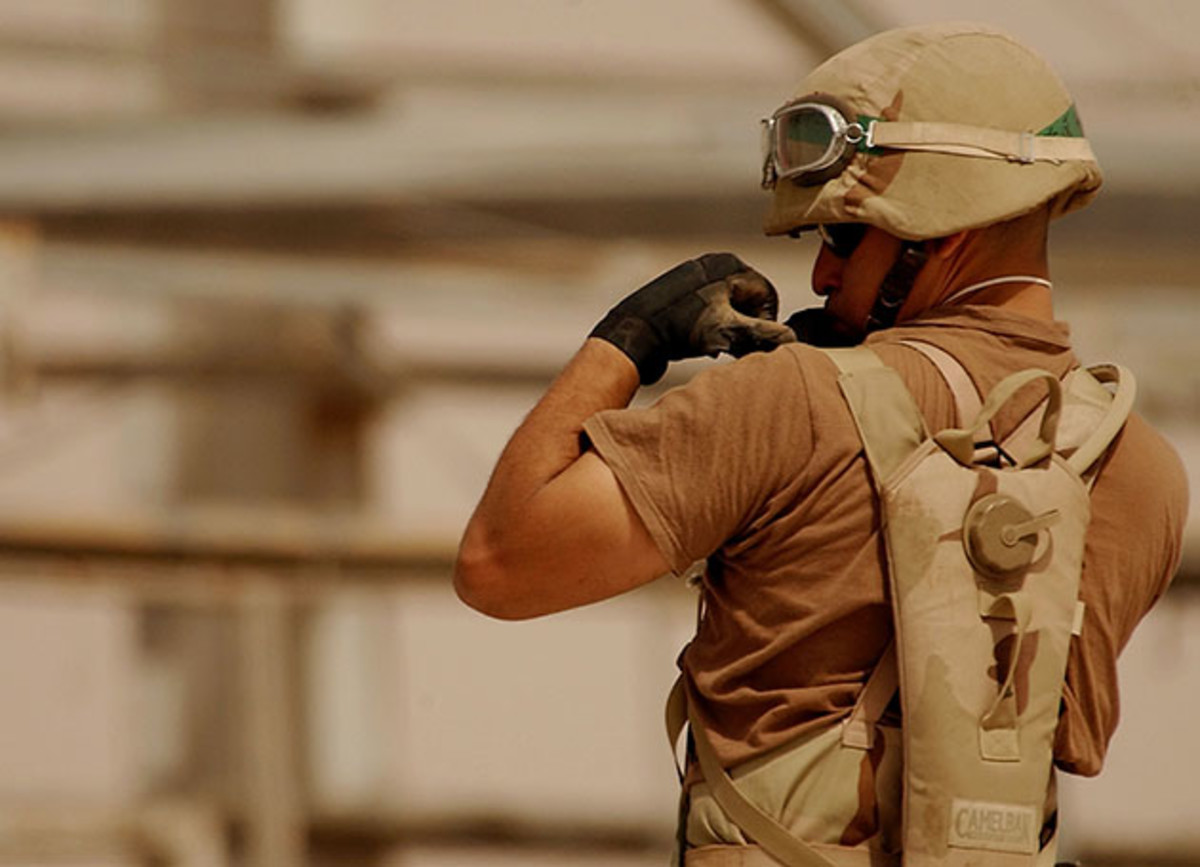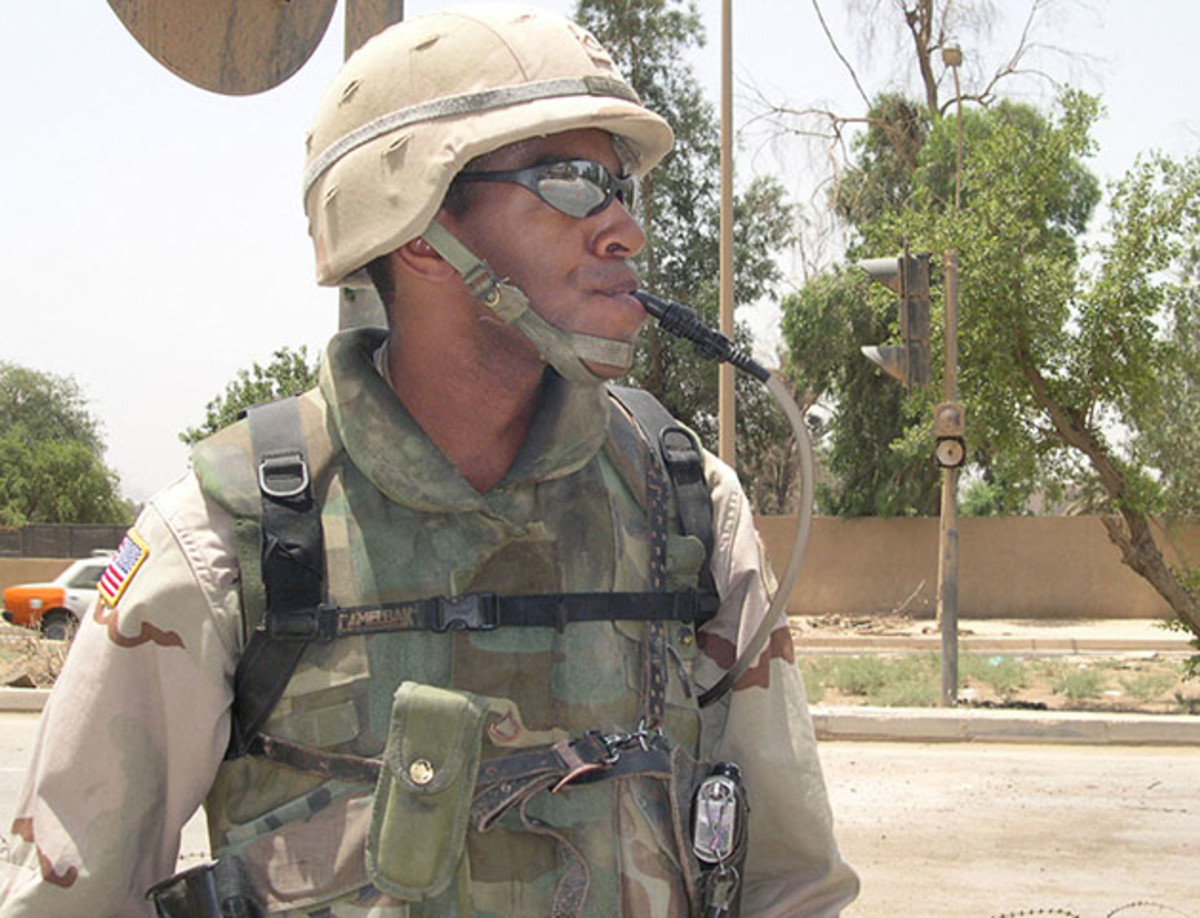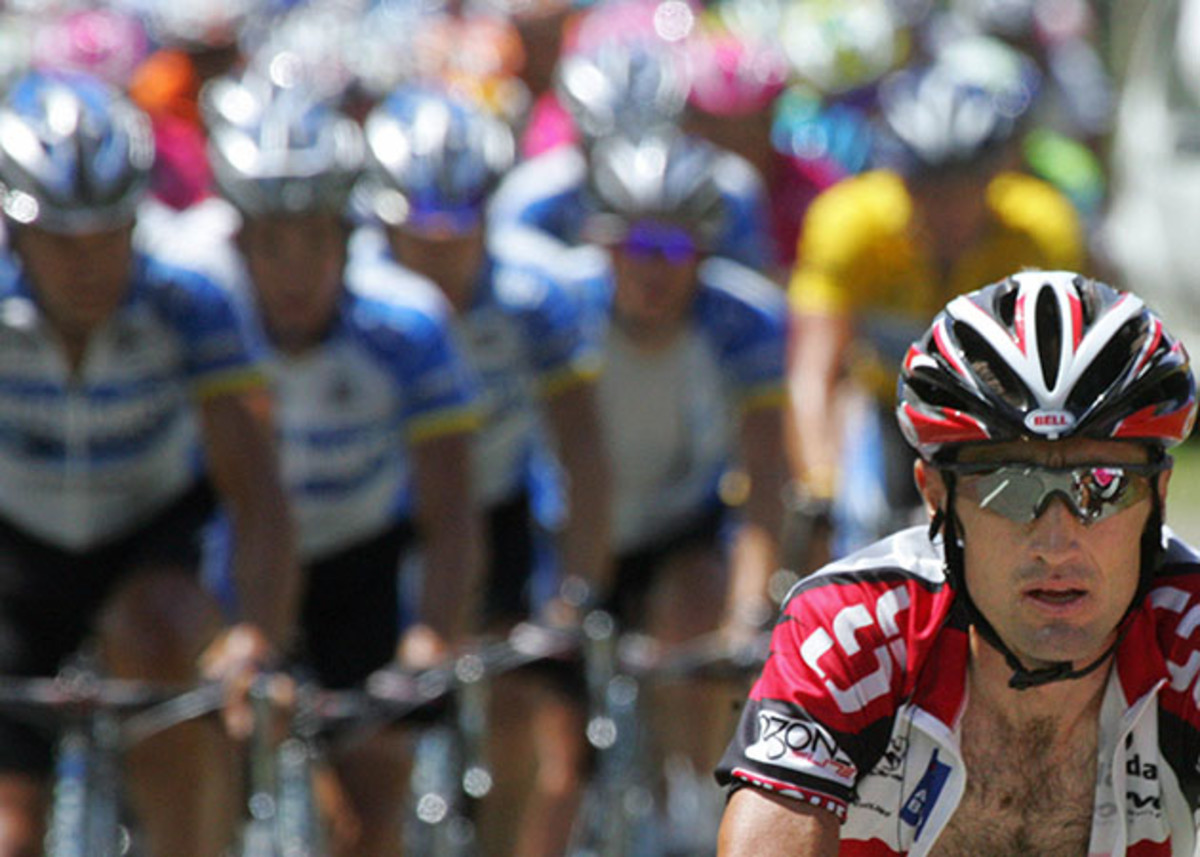Innovation in Hydration: How CamelBak became a military essential

CamelBak started life as a MacGyver-like experiment. In 1989, EMT Michael Eidson repurposed an IV bag as a way to carry extra water on the Hotter’N Hell 100-mile bike race outside Wichita Falls, Tx. He tucked the bag of water into a white tube sock, stuffed that into the back of his jersey, and ran a thin hose over his shoulder that he could use to drink from, clamping it closed with a clothespin. Decades later that experimental spirit lives on behind the iconic hydration-system company Eidson spawned.
Of course, there are the simple substitutions customers make for water.
“Coffee, tea, every imaginable alcohol possible,” says Jeremy Galten, vice president of product at CamelBak. But there have been stranger queries, too. Customers have asked about storing diesel and jet fuel. According to Galten, diesel makes sense, “it’s basically a flexible external tank for vehicles,” but the jet fuel inquiry was a little more mysterious. A small, CamelBak-sized fuel tank just doesn’t seem big enough for aircraft.

In 2005, the U.S. Marines even inquired about whether CamelBak’s reservoirs could be used to hold oxygen for high altitude, low opening parachute techniques. In HALO operations, cargo and personnel are dropped from altitudes above 30,000 feet, where aircraft are outside the range of surface-to-air missiles, but do not deploy their parachutes until they are low down. This means soldiers and supplies spend much less time floating above enemy territory and are less likely to be spotted. But high up, “[marines] need oxygen,” Galten says, “and so they were looking at our reservoir technology and our system to use in a high altitude re-breather.”
NASA even became a customer in 2003. The small blue bite values used in the hydration systems of spacesuits are made by CamelBak, and must be tested to ensure they don’t leak water in zero-g.
Many of CamelBak’s customers are military. A CamelBak backpack was even put on display at the Imperial War Museum in London. Originally belonging to guardsman Terry Brazier of the Irish guards, the pack took several bullets for him while he was on patrol in the Nad-e Ali district of Helmand Province, Afghanistan in 2011.
• Sweat testing is next level of sports hydration
“I tried to have a drink from my CamelBak,” Brazier explained, “but there was no water left in it. It was only when I took it off and looked at it, I realized it had three bullet holes through it. I felt so lucky.”

Military, civilian, or special project, all of CamelBak’s reservoir systems are “still essentially the same thing,” Galten says. In essence, they are also recognizably the descendants of Eidson’s idea: water bag, tube, and mouthpiece.
“We may make some modifications and adaptations,” Galten says, “but we always work with the same ingredients.” The bite valves are medical-grade silicone, and the reservoirs are made from polyurethane sheets that are welded together to form bags by heating them with high-frequency radio waves.
A 2012 request from the U.S. Department of Homeland Security pushed those welds to bursting point. CamelBak already made a 6.6-gallon reservoir pack, called the SquadBak, designed so that soldiers could transport large amounts of water on their backs, but the DHS wanted one that would survive a 35-foot drop from a helicopter. The idea was to be able to use it in a resupply mission in case the aircraft couldn’t land.
• New wearable neck collar could help reduce brain injuries in athletes
For testing, CamelBak headed to the local three-story fire-training tower in Petaluma, Calif.
“Throwing 70 pounds, basically a 70-pound water balloon, off of the top of a fire tower… there’s quite a lot of energy there,” Galten says. “There’s nothing like breaking stuff by throwing it off of a building.”
Five years before that, Humvee manufacturer AM General approached CamelBak as the heavy vehicle maker drew up plans for a future military utility vehicle. AM General was planning to install two chemical and biological weapon-proof 20 gallon reservoirs underneath the floorboards on either side of the transmission. Partly these would be used to refill soldiers own CamelBaks, but AM General was also trying to find a way to protect passengers from improvised explosive devices.

“They were also looking at what role that much water under the vehicle did in blast attenuation,” Galten says. “Did the water have any effect on the severity of the shock from a blast that transmitted up into the cab?”
There have also been other requests that have cut closer to where Eidson started. In the team time trial in the Tour de France on July 5, 2005, Bobby Julich and his Team CSC teammates used an iteration of CamelBak’s RaceVest. The low profile reservoir, which held about two water bottles-worth, was strapped to their backs. CSC won that stage, but, Galten says, “they outlawed it after that because basically it gave an aerodynamic advantage.”
• The science behind your body's need for water |
|---|
And a bike manufacturer even began exploring the possibility of getting rid of the backpack entirely in 2008. The plan was to stuff a reservoir inside the hollow bicycle frame instead, but that project stalled because of the difficulty of gaining access to the water container. CamelBak suggests cleaning and drying reservoirs after each use, which might be a little tricky if they are threaded inside a bicycle frame.
Still, there would have been a nice parallel to that experiment had it worked. Eidson had stuffed his water bag inside a tube sock for a bike race, and two decades later the company he created was trying to stuff their reservoirs inside a bike tube.
